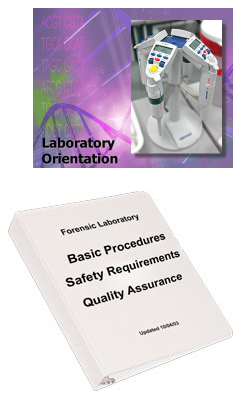Archival Notice
This is an archive page that is no longer being updated. It may contain outdated information and links may no longer function as originally intended.
Home | Glossary | Resources | Help | Contact Us | Course Map
Training to become a reporting forensic scientist is rigorous and time consuming. The first steps are to understand basic procedures, safety requirements, and the laboratory's quality assurance program(s).
The forensic scientist's job requires accurate record keeping, chain-of-custody documentation, stringent quality control, and data management. Forensic scientists must make sure that
- the examination is comprehensive,
- appropriate tests are selected,
- tests are performed correctly,
- interpretation of the data is accurate and thorough,
- the written report is correct and easily understood by a non-scientist,
- testimony is complete and truthful.
Laboratory safety programs are designed to prevent employees or visitors from being subjected to any unusual health or safety risks. Additionally, many safety programs strive to meet the Quality Assurance Standards (QAS) and relevant OSHA or regulatory requirements.
Laboratory quality assurance programs are designed to establish and monitor requirements for all work performed by the staff. New analysts must have a basic understanding of the laboratory's quality control requirements for clean techniques, facilities, equipment, and reagents prior to beginning training in specific laboratory methods.
Additional Online Courses
- What Every First Responding Officer Should Know About DNA Evidence
- Collecting DNA Evidence at Property Crime Scenes
- DNA – A Prosecutor’s Practice Notebook
- Crime Scene and DNA Basics
- Laboratory Safety Programs
- DNA Amplification
- Population Genetics and Statistics
- Non-STR DNA Markers: SNPs, Y-STRs, LCN and mtDNA
- Firearms Examiner Training
- Forensic DNA Education for Law Enforcement Decisionmakers
- What Every Investigator and Evidence Technician Should Know About DNA Evidence
- Principles of Forensic DNA for Officers of the Court
- Law 101: Legal Guide for the Forensic Expert
- Laboratory Orientation and Testing of Body Fluids and Tissues
- DNA Extraction and Quantitation
- STR Data Analysis and Interpretation
- Communication Skills, Report Writing, and Courtroom Testimony
- Español for Law Enforcement
- Amplified DNA Product Separation for Forensic Analysts


